|
The Western Skies Scenic Byway, dedicated in 1998, is among the first state-designated scenic byways in Iowa. Western Skies offers travelers several easy opportunities to venture off the beaten path. The Byway is 142 miles long, traveling through Harrison, Shelby, Audubon and Guthrie Counties, including 14 rural towns. It is easily accessible to travelers from both Interstates 80 and 29.
The byway allows visitors to explore and take in a scenic journey along Iowa’s landscapes of rolling hills, working farmsteads, and tranquil small town life 1. Go local at Woodbine Applefest
From pies to pastries to slushies to caramel, the last Saturday of every September is the Woodbine Applefest, dedicated to a festival of everything APPLE!
2. Celebrate Danish heritage at Tivoli Fest
Tivoli Fest is a Danish-American celebration held every year on Memorial Day weekend in the Danish Village of Elk Horn, Iowa.
Events include:
3. Walk amongst wildflowers at remnant prairies
Dinesen Prairie in Shelby County consists of 20 acres of native prairie that has never been turned by a plow. There are 114 types of plants here, and springtime brings forbs like prairie phlos and indigo bush. Summertime flowers include Canada anemone and leadplant, and fall brings blooms like asters and blazing star. Typical grasses found here are porcupine grass and prairie horsetail. Habituating the prairie are birds including bobolink and meadowlark, as well as many small mammals like the white-tailed jackrabbit and the meadow vole. The preserve was dedicated as a biological state preserve in 1977 by Derald Dinesen, whose gravestone is on top of a hill in the preserve, from which a view of the prairie is seen.
Greenwood Cemetery Prairie sits next to one of the older cemeteries (1860s) in Guthrie County. Bundt Prairie is a rare gem located where a 1-room country school originally sat. A variety of native prairie grasses and forbs inhabit both sites. Bring your identification book and your camera to capture the beauty of this remarkable ecosystem. While you hike the area, keep in mind that what you see of the prairie plants is typically only 1/3 of the plant's height. Some plants have root systems that stretch over 15 feet into the ground. Friendly reminder: Please don't pick any wildflowers and be respectful of cemetery rules. Sheeder Prairie State Preserve is a 25-acre tallgrass prairie. It is located five miles west of Guthrie Center in Guthrie County. The property was purchased in 1961 by the Iowa Conservation Commission from Oscar and Clara Sheeder, the son and daughter-in-law of the original homesteader. It was dedicated as a biological state preserve in 1968. This preserve lies within the Southern Iowa Drift Plain, a landform region of gently rolling terrain. Over 200 plant species are found in this preserve, including thirty grasses. 4. Snap a selfie with Albert the Bull
Albert, the "World's Largest Bull," is a Hereford bull nine times larger than life with a 15-foot span between his horns. It took 65 gallons of paint to cover Albert with the red and white colors of the Hereford breed. The steelwork for his frame was created from abandoned Iowa windmills.
Albert is celebrating his 60th birthday in 2024! Visit Audubon County this summer to snap a selfie with the birthday boy! 5. Hike at Whiterock Conservancy
Whiterock Conservancy is a 5,500 acre, nonprofit land trust dedicated to providing educational and recreational opportunities for the public, improving and protecting the land through conservation, and demonstrating sustainable farming methods.
Explore over 40+ miles of hiking, running, mountain biking, and equestrian; set up camp in the RV or tent camping areas; or enjoy the comforts of home in one of several vacation rentals. Hikers, runners, and walkers are welcome on any of Whiterock's trails. There is no use fee, but a suggested donation of $5 can be made at any trailhead. 6. Ride the T-Bone Trail
The T-Bone Recreation Trail runs from the city of Audubon into Cass County. It is named for the T-Bone event that originated in the 1950s in Audubon when the farmers all loaded up their cattle on to a train and rode with them to market in Chicago. The trail totals 21 miles; 16 of these miles are located in Audubon County. The trail begins in Audubon and goes south through Hamlin, Exira, Brayton, and into Cass County. Eventually, the trail will go into Atlantic, Iowa. The trail is hard surface making it great for biking, walking, running, and rollerblading. Most of the trail is asphalt with a few miles in the middle made out of concrete.
0 Comments
Get away ... from everything. When it's time to escape from the hustle and the bustle of your everyday life and finally spend some time in serenity, the Loess Hills are your destination. Unique, breathtaking scenery ... original, authentic, "down-home cooking" ... remarkable attractions ... and most of all, peace. Check these seven things off your Loess Hills bucket list!
1. See the bison at Broken Kettle Grasslands
The best way to see the bison is to drive the Butcher Road Connection loop of the Loess Hills National Scenic Byway. The Aalfs Family Preserve Overlook is located on Butcher Road and provides a stunning view of Broken Kettle Grasslands.
2. Learn about the Loess Hills at Dorothy Pecaut Nature Center
Hike a trail and let prairie grasses tickle your chin. Explore bur oak forests with 150-year old giants. Climb the ridges and imagine what Lewis and Clark might have seen. Learn at the award-winning Dorothy Pecaut Nature Center located in the heart of the Loess Hills.
The center is over 14,000 square feet large and boasts an amphitheater, playground, exhibits, gardens, and hiking trails, among other amenities. Admission is free to the general public. Hiking trails connect to adjacent Stone State Park. Woodbury County Conservation staff offer a wide array of environmental education and outdoor recreation programs. 3. Visit the Loess Hills Scenic Overlook
When approaching the western border of Iowa, travelers are often intrigued by the view of a most extraordinary landscape of prairie and forest covered steep bluffs, narrow ridges and rolling hills. Dubbed "The Spot" by local legend Walter Ordway, Jr., the Loess Hills Scenic Overlook is a must-see stop on the Loess Hills National Scenic Byway.
The accessible overlook platform offers 360-degree views of the Loess Hills in Monona County. There is a short, one-mile loop that traverses the ridge, then dips into the valley before returning on another ridge. The trail also connects to other trails in the Loess Hills State Forest. 4. Hike Brent's Trail
Brent's Trail is an 8-mile hiking trail connecting Harrison County Conservation’s Murray Hill Scenic Overlook and Gleason-Hubel Wildlife Area via the Loess Hills State Forest. The trail is the start of a proposed trail that will eventually connect the northern and southern ends of the State Forest. The trail is named after longtime state forester Brent Olson.
Brent's Trail is open to the public daily, year-round. Hikers should note that this is a rugged hike on dirt and grass surfaces. Water and restrooms are not available, so hikers should come prepared for a true backcountry experience unlike anything else in Iowa. Primitive, dispersed camping is allowed within Loess Hills State Forest. The route is marked with metal oak leaf signs. A southern extension was added in 2021, allowing hikers to extend their hike for an 11-mile trek. 5. HawkWatch at Hitchcock Nature Center
Every year, from September through December, birds of prey enthusiasts gather at Hitchcock Nature Center to observe & count thousands of eagles, hawks, and other raptors as they migrate south.
Hitchcock HawkWatch is a volunteer-driven research project based at Hitchcock Nature Center in Honey Creek, Iowa. Staffed by dozens of volunteers and one paid seasonal employee, this hawk watch effort counts an average of 13,000 migrating raptors annually. Occupying the observation tower at Hitchcock Nature Center, our team watches from a vantage point providing a 360-degree view of the Missouri River Valley. The official hawk watch season is from September 1st through December 13th annually. Hitchcock Nature Center is an optimal location to view the annual migration of numerous species of raptors due to its position in the Missouri River Valley. Here prevailing westerly winds create near-perfect conditions for migrating raptors as they soar on thermals and topographically-induced upward wind deflections on their journey south. 6. Explore B-Level Roads
Vertical faces of loess in road cuts and gully walls have been known to stand for more than a hundred years, in contrast to loess slopes, which are prone to some of the highest erosion rates in the country. The style of roadcuts throughout the Loess Hills reflects the capacity of exposed loess to maintain nearly vertical faces.
Many impressive, nearly vertical road cuts can be seen on several level B, minimum maintenance roads in the Loess Hills. Mills County, in particular, has several of the most impressive level B roads such as Hastie Hollow (Pathfield Road) and Lake Hill (Raleigh Road) are very fun to drive. Fulton Ave in Harrison County is another highlight. One note of caution: don't drive level B roads if they are muddy. All-wheel drive and high clearence are also recommended. Check outIowa Road Trip's favorite level B roads in the Loess Hill.s. 7. See the fall colors at Waubonsie State Park
As a site on the Lewis and Clark Historic Trail, Waubonsie State Park in southwest Iowa is known for its exceptional vistas of Iowa’s unique Loess Hills and the Nebraska plains. Its extensive trail system offers something for the avid mountain biker, equestrians looking for a relaxing ride, or anyone eager to hike amongst the tranquil surroundings of the park’s ridgetop prairies and shaded woodland valleys. With nearly 2,000 acres of recreational opportunity and quiet beauty, Waubonsie State Park is an Iowa gem waiting to be explored.
Peak fall color viewing at Waubonsie State Park is typically from mid to late October. Check the Iowa DNR's Fall Color Report for updates and estimates on peak color. Our mission at Golden Hills RC&D is to collaboratively develop and lead community, conservation, and cultural initiatives to improve our quality of life in rural western Iowa. Our "official" territory from our original organizational bylaws is an eight-county region in the southwestern portion of Iowa (Cass, Fremont, Harrison, Mills, Montgomery, Page, Pottawattamie, and Shelby). In 2023, we added four more counties (Audubon, Carroll, Crawford, and Monona). Several projects extend beyond these 12 counties into more than 20 counties (learn more about where we work). Our goals are to develop industries in local communities that utilize local resources; ensure healthy natural resources that meet the needs of agriculture, industry, private use, and recreational facilities; promote and enhance art, culture and historic resources in rural communities; collaborate with local governments and organizations on projects that benefit the environment; and work on projects that fill gaps in community services to benefit people of southwest Iowa. We accomplish these goals by focusing our work in five program areas: outdoor recreation and tourism, land stewardship, water resources, local foods, and arts and culture. Today's Mission Monday focus is Arts & Culture. Since 2018, Golden Hills has worked with Waubonsie State Park and Friends of Waubonsie State Park to host Iowa's first State Park Artist Residency program. This program is modeled after similar artist residencies at national parks and state parks outside of Iowa and was the first of its kind at an Iowa state park. Following Waubonsie State Park’s Artist in Residence program’s successful inaugural year, the Iowa DNR launched their “20 Artists, 20 Parks”, a similar program with faculty and graduate students from Iowa State University. This year, the Waubonsie State Park Artist in Residence program will award one residency that will take place from June 14th to 28th. Artists may work in a variety of media. The program was designed to allow artists a respite from their typical distractions so that they could intensively focus on their work in the quiet seclusion of Waubonsie State Park, while finding inspiration in the beauty of their natural surroundings. In exchange for the facility use during the residency, participants are required to perform public engagement either in person or through social media and to donate one piece of art to the park at the conclusion of their stay. Waubonsie State Park is a 2,000-acre preserve in the scenic and unique Loess Hills landform. The park offers many miles of hiking, equestrian, and bike trails through woodlands, prairies, and oak savanna. Waubonsie is located on the Loess Hills National Scenic Byway™ near Hamburg, IA, about an hour’s drive from Omaha and Lincoln, two hours from Kansas City, and two and a half hours from Des Moines. Golden Hills RC&D, Waubonsie State Park, and Friends of Waubonsie State Park are excited to announce the opening of the latest round of an innovative artist in residence program at Waubonsie State Park. This is the fifth season that the park will host artists for the program, which was the first of its kind in the state. Artists will receive living and studio space in the park, with time to focus on their work and seek inspiration from the southern Loess Hills. Applications are being accepted from Feburary 20th through March 31st. Artists will be selected through a competitive application process and notified by May 1st. The program is open to artists of multiple disciplines and from any location. For more details about the timeline and how to apply, visit www.goldenhillsrcd.org/artist-in-residence.
Surging glacial meltwaters carved deep into soft glacial drift to form the middle Little Sioux River valley. Today, steep, unplowed prairie-cloaked hills flank this meandering river and forested and farmed valley. Glacial Trail Scenic Byway showcases this unique landscape. Nature, scenery, archaeology, and history intersect in the Glacial Trail Byway corridor, creating a compelling experience for byway travelers. This 36-mile corridor encompasses a landscape like no other in the region.
While you can drive the Glacial Trail Scenic Byway in less than one hour, there is a multitude of places to stop on or near the byway. Here is a list of six bucket list things to do on the Glacial Trail Scenic Byway. 1. Paddle the Inkpaduta Canoe Trail
The Inkpaduta Canoe Trail on the Little Sioux River runs from Spencer in Clay County to Smithland in southern Woodbury County. This span of river is approximately 134 miles in length.
The Cherokee County Conservation Board maintains 12 river access areas from the northern county border to the southern. These various access points permit paddlers to experience a relaxing 1-4 hour float or to escape for a camping and floating adventure over 3 or more days. Contact Cherokee County Conservation Board to rent canoes and kayaks. They rent a canoe/kayak trailer and all of the equipment for $200 per event. Trailer and equipment should be used within county or surrounding area. Individual canoes and kayaks are not available for rent. 2. Fish at Linn Grove Dam
Located in historic Linn Grove, Linn Grove Dam Area features a low-head dam on the Little Sioux River, making it one of the best fishing holes in Iowa. Four primitive campsites are located close to the river for great access and a bait shop that is open seasonally is located nearby.
3. See the bison at Prairie Heritage Center
The purpose of the Prairie Heritage Center is to provide environmental education as it relates to the prairie and the county, to preserve and protect our prairie heritage, and to encourage economic development with regards to recreation and historic exploration. Every season of the year is a great one on the prairie!
The Prairie Heritage Center opened its doors to the public on November 28, 2006. Over 100,000 people have visited the center since that time. They have come from all 50 states and over 26 foreign countries. It is a great place to enjoy educational and interactive displays, hike the trails, savor the wildflowers, and engage in bird and wildlife watching. Visit the Prairie Heritage Center and check out all the things to do! 4. Visit the Sanford Museum & Planetarium
Located in Cherokee, the Sanford Museum and Planetarium has exhibits and activities on a variety of subjects including: Archaeology, Art, Astronomy, Geology, History, Natural History, and Paleontology.
The museum was made possible through a trust fund established by the late Mr. & Mrs. W.A. Sanford of Cherokee, in memory of their only son, Tiel. It was their intention to create a charitable trust for historical, cultural and educational purposes that was to be free and open to the public. The facility was officially opened to the public in 1951. Since then, more than one million visitors have viewed exhibits, attended demonstrations, and taken part in a wide variety of activities. Sanford Museum & Planetarium 117 E Willow St. Cherokee, IA 51012 5. Birdwatching at Wanata Park
Wanata Park is a wonderfully quiet spot along the riparian habitat of the Little Sioux River just south of Peterson, Iowa. A great place for hiking and bird watching as well as other family recreation.
6. Find native wildflowers at Waterman Prairie
Waterman Prairie contains an abundance of unique native prairie habitat. Little Bluestem prairies are dotted with several colorful milkweed species, Pasqueflower, Prairie Moonwort, Purple Prairie Clover, Ground Plum, Prairie Blazing Star, Silky Aster, White Lady’s Slipper, and many native sedges. Oak savanna, one of Iowa’s most unique and threatened ecosystems, is characterized by prairie plants such as Side-oats Grama, Wild Indigo, and Prairie Phlox, interspersed with sprawling Bur Oaks.
Our mission at Golden Hills RC&D is to collaboratively develop and lead community, conservation, and cultural initiatives to improve our quality of life in rural western Iowa. Our "official" territory from our original organizational bylaws is an eight-county region in the southwestern portion of Iowa (Cass, Fremont, Harrison, Mills, Montgomery, Page, Pottawattamie, and Shelby). In 2023, we added four more counties (Audubon, Carroll, Crawford, and Monona). Several projects extend beyond these 12 counties into more than 20 counties (learn more about where we work). Our goals are to develop industries in local communities that utilize local resources; ensure healthy natural resources that meet the needs of agriculture, industry, private use, and recreational facilities; promote and enhance art, culture and historic resources in rural communities; collaborate with local governments and organizations on projects that benefit the environment; and work on projects that fill gaps in community services to benefit people of southwest Iowa. We accomplish these goals by focusing our work in five program areas: outdoor recreation and tourism, land stewardship, water resources, local foods, and arts and culture. Today's Mission Monday focus is Outdoor Recreation & Tourism. Golden Hills RC&D partnered with the Monona County Historic Preservation Commission to design four interpretive panels about historic sites in Monona County. The project was funded thanks to a grant award from the Monona County Community Partners Foundation. The Monona County Historic Preservation Commission was established in 1988 by the Monona County Supervisors. Their mission is to promote the educational, cultural, economic, and general welfare of the public through the recognition, enhancement, and perpetuation of sites and districts of historical and cultural significance. The Commission leads the Country School Experience, historic excursions for the Loess Hills Prairie Seminar, historic tours of the Mann School and South Jordan Township Cemetery by appointment, and have completed a brochure about the Turin Man. Their volunteers also assist with services for Memorial Day at the Ingemann Danish Lutheran Church and services for Memorial Day and the month of June at the Soldier Lutheran South Church. The group is all-volunteer and has a very modest annual budget of only $500. They work to keep history alive by collaborating with other groups on projects like this to educate residents and visitors about the rich history of Monona County. The panels will be installed at each of the four locations once the weather warms. All four sites are located near each other and would make an excellent weekend excursion to learn about the cultural history of Monona County.
The Glacial Trail Scenic Byway is a 36-mile loop drive that takes some surprising turns through O'Brien, Clay, Buena Vista and Cherokee counties and the rural towns of Peterson and Linn Grove.
Traveling through the corners of these four counties, the byway boasts more than its share of parks and wildlife areas. Some are rich with cultural history and natural resources. Visitors will find park structures built during the Civilian Conservation Corps era and log cabins from pioneer days. Surging glacial meltwaters carved deep into soft glacial drift to form the middle Little Sioux River valley. Today, steep, unplowed prairie-cloaked hills flank this meandering river and forested and farmed valley. Glacial Trail Scenic Byway showcases this unique landscape. Nature, scenery, archaeology, and history intersect in the Glacial Trail Byway corridor, creating a compelling experience for byway travelers.
The Iowa Scenic Byway Passport is new this year with an emphasis on Local Legends and fun new prizes, including limited edition Local Legend collectable cards. Now you can enjoy the beauty of Iowa’s scenic byways while learning about the history, people and places along the byways. Who knows, you might even become a Legend yourself!
It’s free to sign up and the more locations along the byways you visit, the more points you earn. Earn enough points and you can use them to secure a packet of 14 limited edition Local Legend Trading Cards.
During the month of February, travelers on the Glacial Trail Scenic Byway can pick up a free poster of the byway featuring its iconic bison. Stop at the Prairie Heritage Center near Peterson or the Sanford Museum in Cherokee, show your Byways Passport on your phone, and you will receive a free Glacial Trail Scenic Byway poster!
Make sure you also stop at the five Local Legends locations on the byway. Check in at each site to earn points. Those points can be redeemed for a set of 14 collectible cards featuring Local Legends from all 14 of Iowa's scenic byways. The five Local Legends locations on the Glacial Trail Scenic Byway are listed below. Our mission at Golden Hills RC&D is to collaboratively develop and lead community, conservation, and cultural initiatives to improve our quality of life in rural western Iowa. Our "official" territory from our original organizational bylaws is an eight-county region in the southwestern portion of Iowa (Cass, Fremont, Harrison, Mills, Montgomery, Page, Pottawattamie, and Shelby). In 2023, we added four more counties (Audubon, Carroll, Crawford, and Monona). Several projects extend beyond these 12 counties into more than 20 counties (learn more about where we work). Our goals are to develop industries in local communities that utilize local resources; ensure healthy natural resources that meet the needs of agriculture, industry, private use, and recreational facilities; promote and enhance art, culture and historic resources in rural communities; collaborate with local governments and organizations on projects that benefit the environment; and work on projects that fill gaps in community services to benefit people of southwest Iowa. We accomplish these goals by focusing our work in five program areas: outdoor recreation and tourism, land stewardship, water resources, local foods, and arts and culture. Today's Mission Monday focus is Land Stewardship. Since 2021, Golden Hills has worked with Dr. Tom Rosburg of Drake University, Chris Benda with Southern Illinois University, and Dr. Cynthia Lane to host virtual programs about plant identification and ecology. Golden Hills is partnering with Dr. Tom Rosburg to host another series of virtual plant identification class series in early 2024! ID and Ecology for Viola in Iowa Monday, February 12 7-830pm $15 (+Eventbrite fees) Register here ID and Ecology of Iowa Native Shrubs February 26 7:00-8:30pm $15 (+Eventbrite fees) Register here ID and Ecology of Elymus in Iowa March 11 7:00-8:30pm $15 (+Eventbrite fees) Register here ID for Invasive and Native Look-alike Plant Species in Iowa March 25 7:00-8:30pm $15 (+Eventbrite fees) Register here For more information about this year's classes, as well as a listing of previous year's classes and recordings, visit goldenhillsrcd.org/plantid.html |
Archives
June 2024
Categories
All
|
Address712 South Highway Street
P.O. Box 189 Oakland, IA 51560 |
ContactPhone: 712-482-3029
General inquiries: [email protected] Visit our Staff Page for email addresses and office hours. |
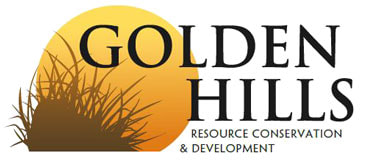
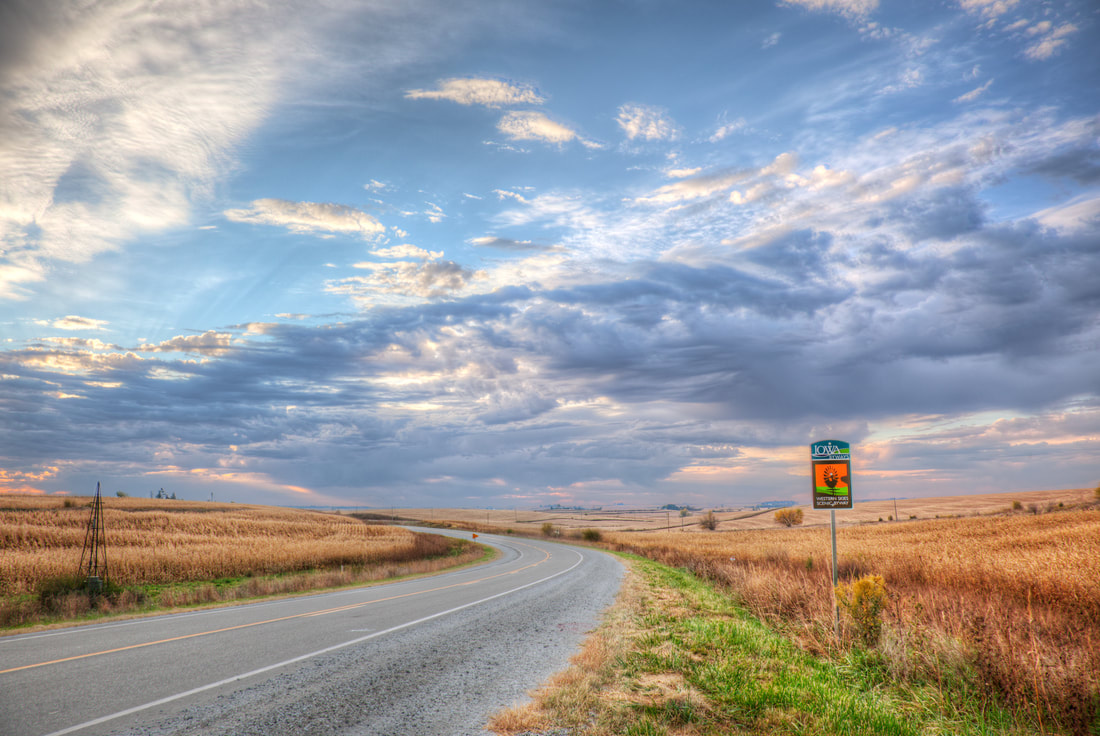






















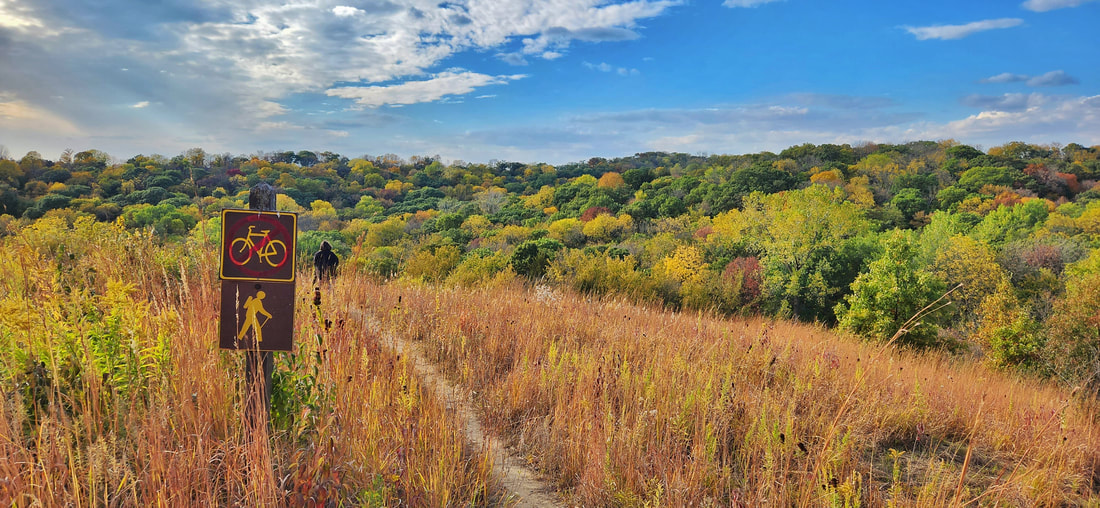














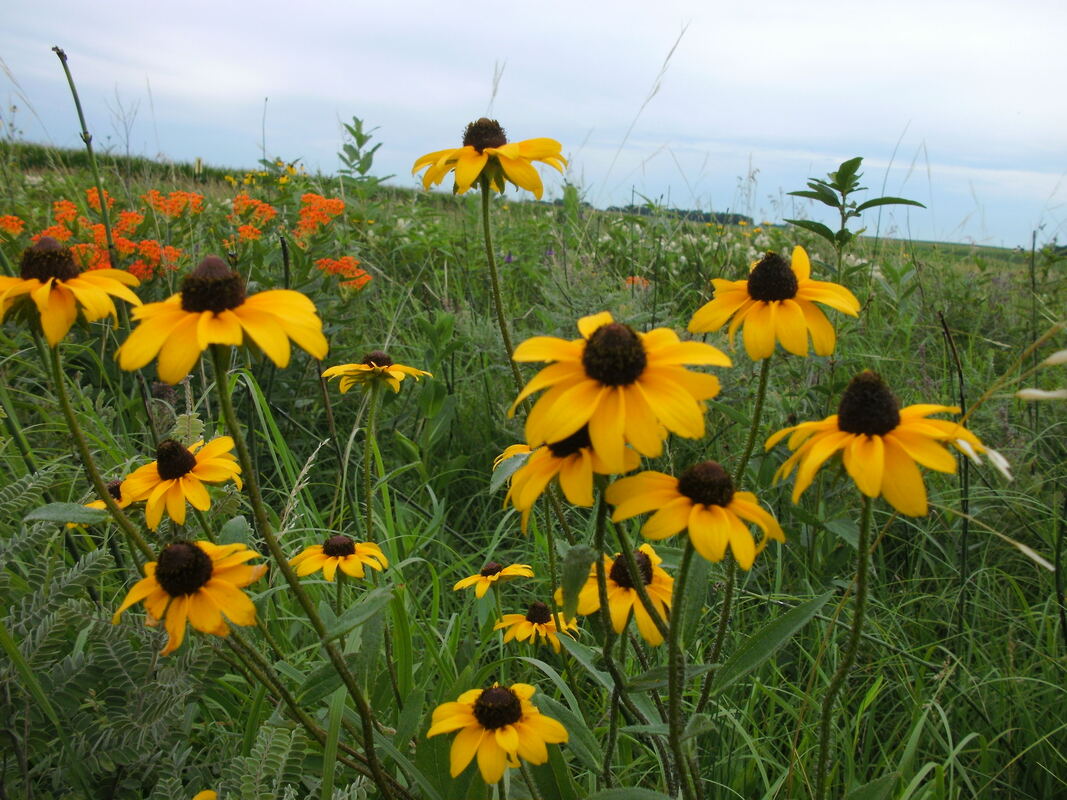
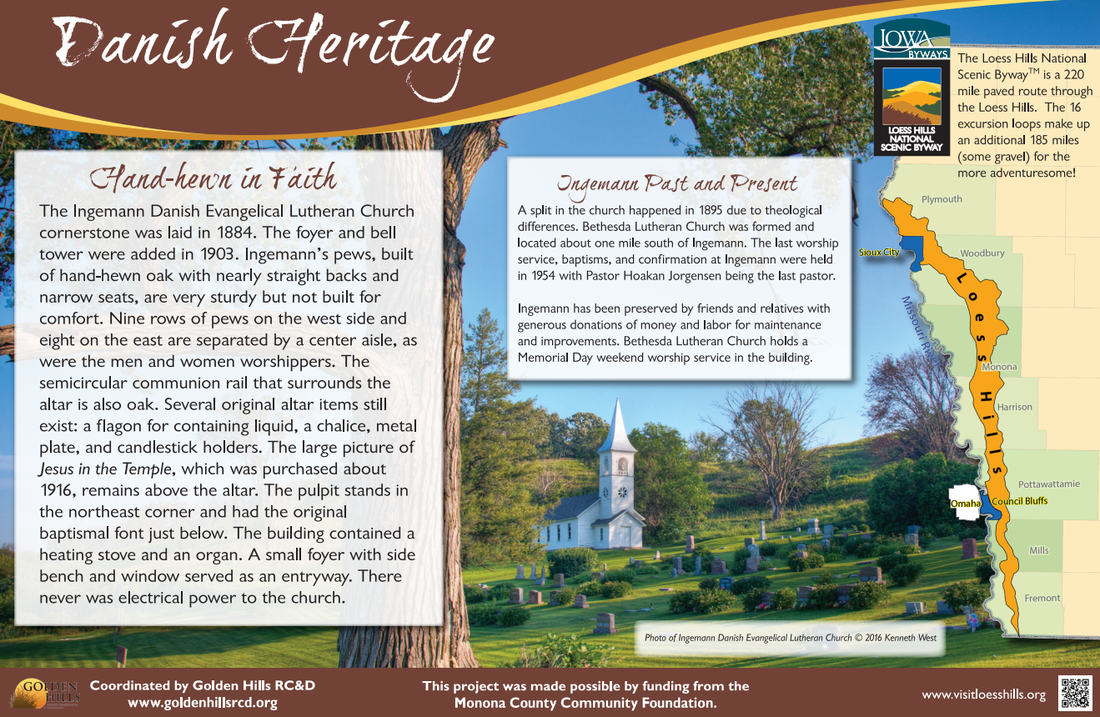
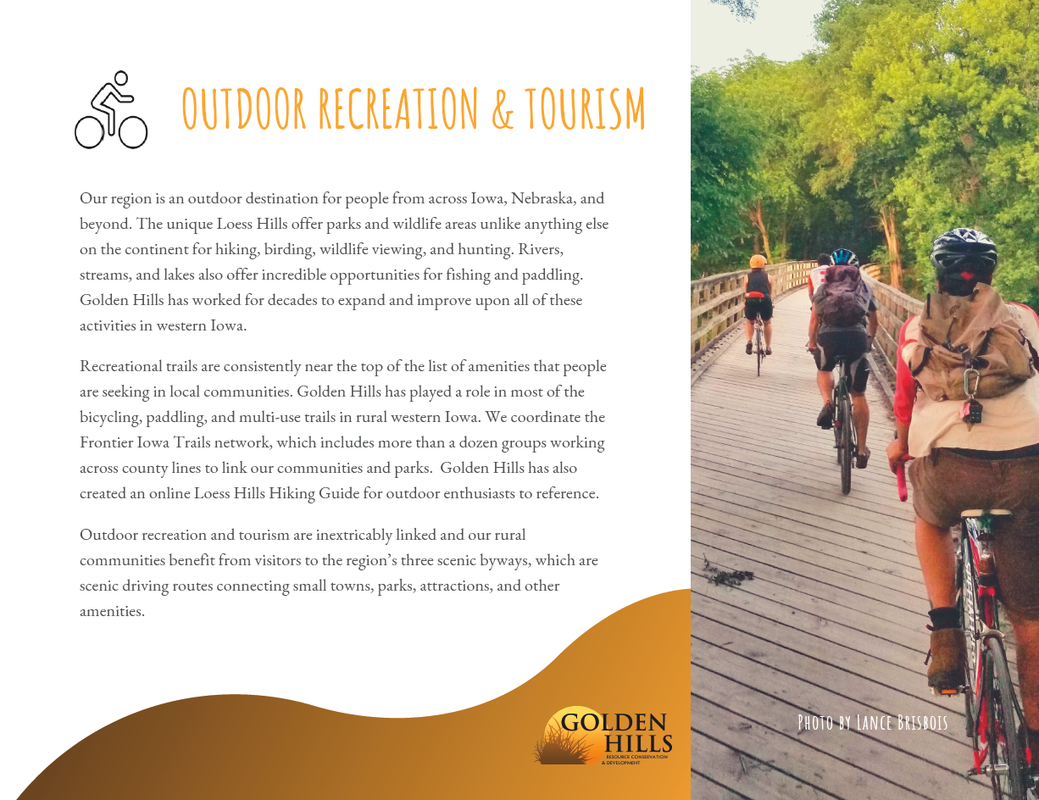


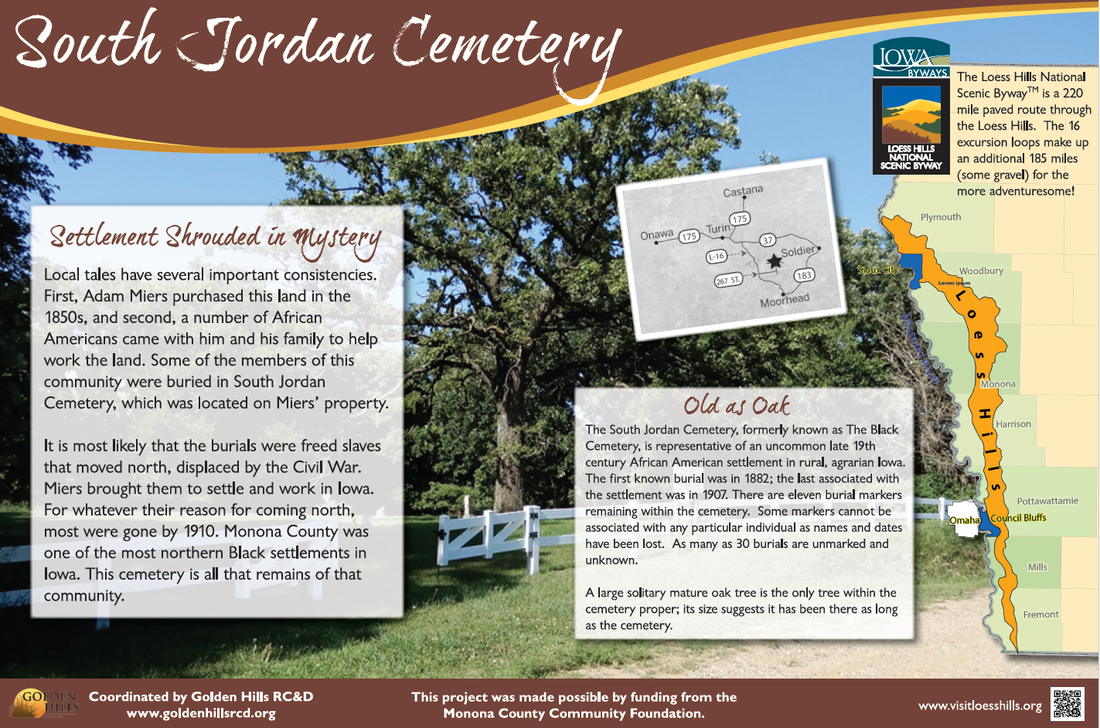





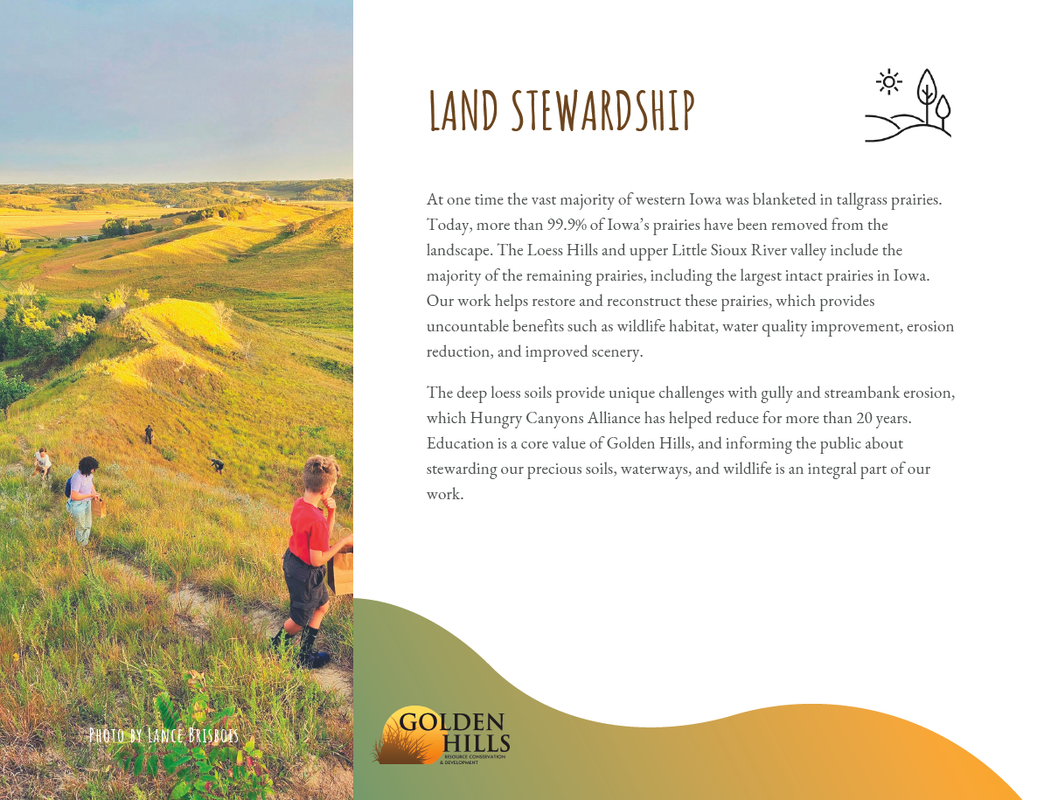

 RSS Feed
RSS Feed